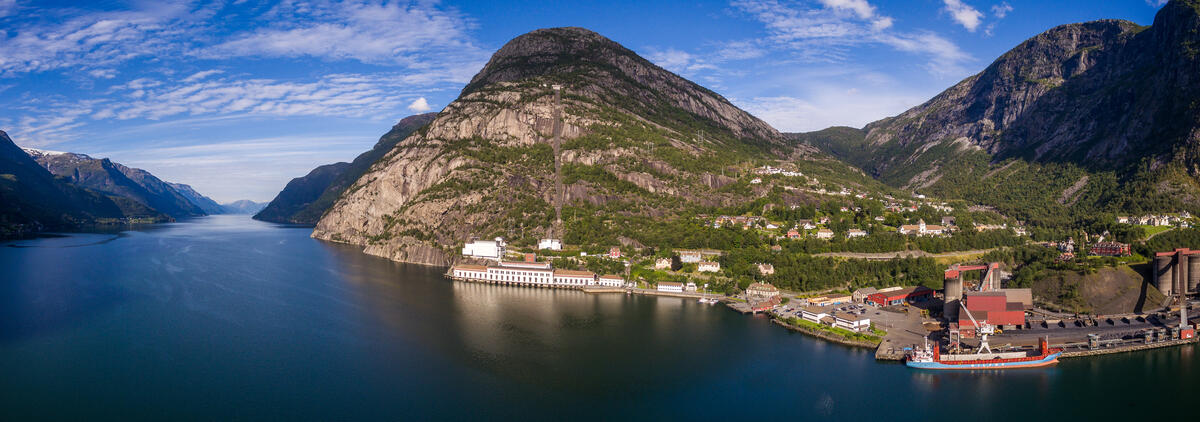Contact information
The hydropower museum - Kraftmuseet
Naustbakken 7, 5770 Tyssedal | Phone: +47 53 65 00 50
Tel. Industrial archive: +47 53 65 00 63
Tel. Building and construction: +47 53 65 00 66
E-mail: post@kraftmuseet.no
Tyssedal power plant - industrial heritage site
For generations, the magnificent power station by the fjord transformed roaring waterfalls into lighting and heating.
Today the powerplant is a vibrant museum which offers a wide spectre of activities: films and exhibitions, guided tours, concerts and plays, museum shop and cafeteria.
HISTORY
The English “discovered” the magnificent scenery of Tyssedal and Odda in the 1820`s and were the first of a large number of tourists travelling to this beautiful area. The primary magnets for tourism were the waterfalls and the glacier: Tyssestrengene, a waterfall with a sheer drop of more than 300 metres, was the highest in Norway. The Ringedal waterfall was even higher and wider, but the sheer drop was “only” 160 metres. The Norwegian Trekking Association made an early effort to preserve these waterfalls, but intense pressure from industrial developers, made the organization abandon its principles and sell the rights. In a decade, starting in 1906, Tyssedal tranformed from a valley of two farms to a modern industrial community.
Tyssedal power plant represents the work of the pioneers developing industrial Norway. The penstock was the first built to that could handle this immense water pressure and were the steepest to that date – 730 metres long, with a drop of 410 metres and an incline of up to 60 degrees. Most of the construction work was carried out on icy mountainsides during the wintertime in order to avoid high temperatures expanding the metal. The pipes were produced in Germany, and the iron had a thickness of 7 mm at the top and 35 mm at the bottom sections to stand the extreme pressure of the water. The construction workers literally had to bolt themselves and their scaffolds to the mountainside, or dangle in ropes. The fifth and last penstock was completed in 1915.
- 1/1
The power station Tysso 1 (to the left) and Eramet (to the right) in Tyssedal. Dag Endre Opedal / Kraftmuseet
